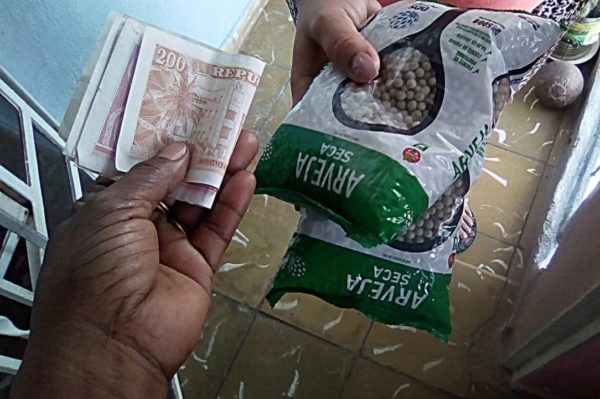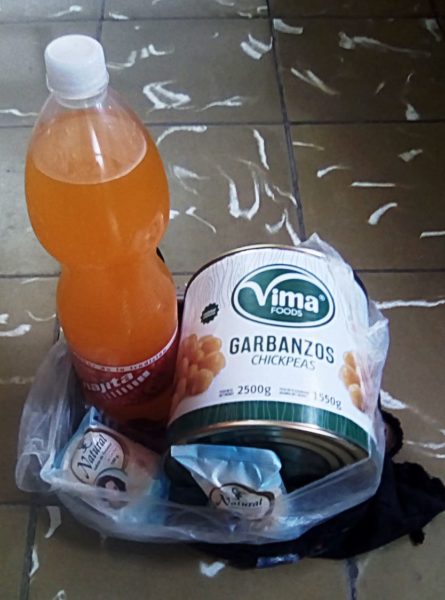The Adaptability of Havana’s Illicit Market
By Mario Local

HAVANA TIMES – Many people’s understanding of Havana is: “A hundred pesos is nothing nowadays,” and that it doesn’t matter how much you have to sacrifice in order to feed your family. Unlike last year, it is becoming a lot more commonplace for people to walk around with 200, 500 or more pesos in their pocket “for whatever shows upon,” people say to each other as they wait in line.
The restructuring process of Cuba’s official economy is almost three months old, and prices of products and services are exceptionally high.
Parallel to this reality, the informal market – which is called the “black market” here on the island – shows robust health, in its own economic restructuring of sales, which can double and triple state prices, or even more, depending on demand.
Shortages in government stores continue to be the main reason for the illicit market’s boom. This commercial activity is unlike self-employment, as you don’t need a license or other authorization to exist and the main source of supplies is the state market itself.
Some people prefer to buy “… a bag of potatoes or malangas for 120 pesos, so they don’t have to wait in (long) lines…”, even if they don’t contain the weight one-off sellers say they do, “because they pretty much bring it to my front door”, they say or “I prefer to pay them than waste that time waiting in line.”

Not having to wait in line from 5 AM in the morning (if you take the night curfew into account), until you are able to buy after several hours waiting around, fighting against a crowd that is competing in terms of time, need and a lack of respect for order in lines, are some of the reasons that encourage people to turn to the illicit market.
Improvised sellers (who appear on a street corner, or hide on some stairs or pass by you and alert you to the fact they have bags full of products through gritted teeth) have different means of getting a hold of goods.

From ordering purchases from sales assistants who sell rationed products for the State, and paying a little extra – which is normalized corruption in this country. Or buying goods in the lines – sometimes buying more products than what are allowed per person.
Agreements are also made with people who have small plots of land or back home, and are those who benefit from products which are in severe shortage, such as milk. Milk is distributed to children and/or the elderly on the whole (diabetics, HIV and AIDS patients, people with stomach ulcers, high cholesterol and others) and their sale represents an increase in the measly income some people earn, bearing in mind the current devaluation of the Cuban peso.
This is how the following goods appear on the illicit market: meat (mainly chicken), bread, root vegetables, eggs, rice, sugar, cooking oil, etc. These are joined by: detergent, shampoo and hair conditioner, deoderant, toilet paper, alcohol and others.
Meat, liver and minced beef, fish, yoghurts, cheese and butter are sold at the MLC (US dollar) stores, like other much-needed and popular goods. MLC (Freely Convertible Peso) essentially translates into dollars from remittances abroad.
As you would expect, prices oscillate on the illicit market if a product is absent and by every family’s individual need – some of which are quite extensive and/or with children at home during the day because of COVID-19.
Add to these factors such as “the end of the month”, as well as commercial dynamics, and prices sometimes vary because of the “toughness” of some sellers, who abuse the need of their customers.
It’s worth mentioning that most families have already run out of everything the State sells them via the ration booklet (a kind of card that gives them a limited quantity and variety of products), by the “end of the month”.
Keep in mind that many one-off sellers don’t always have another source of livelihood, even if you can find one or two “kind and healthy” ones – like grandmothers say. Young people who haven’t found the State’s job market appealing – farm work being one of these offers.

The spectrum also opens up to elderly people who are looking to make a little extra money on the side. Or to people with health problems, such as an alcohol addiction, or others who are at a disadvantage or vulnerable and are not assisted by the State in an efficient and adequate manner, and become one-off sellers out of need.
On the other hand, many of these young sellers form part of the migration movement to Havana, and that it is a regular route for people living in the country’s interior and who want to settle without having proper legal protection.
They don’t have the means to apply for residency in the city and so they choose to work illegally. In many cases, they already have family in this geographic area and they join families that have already settled or are living on the outskirts of the city in improvised dwellings.
The illicit market has existed in Cuba for many, many years and denying its institutionalism out of force, adaptability and survival, is to turn a blind eye to the factors that keep it afloat.
One of the most important supports for its restructuring process and presence is the conviction of its customers who feel “they have no other choice” or “that things won’t change.” The exude conformity in the face of the irremediable, because they don’t believe they are agents of change for the better in Cuba’s economic and social system.





